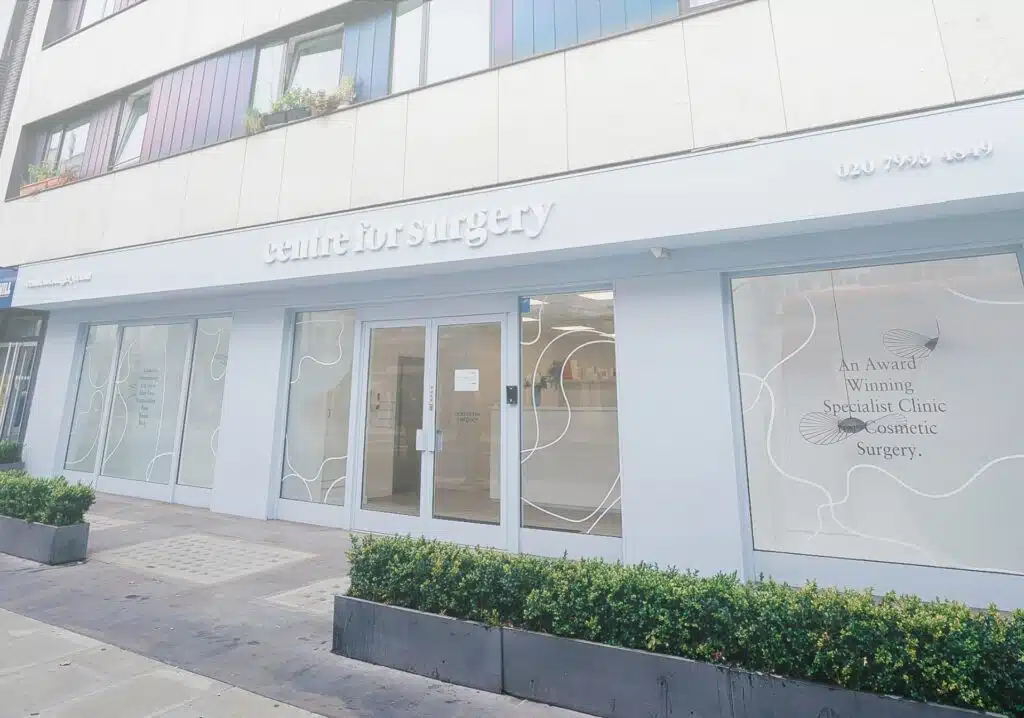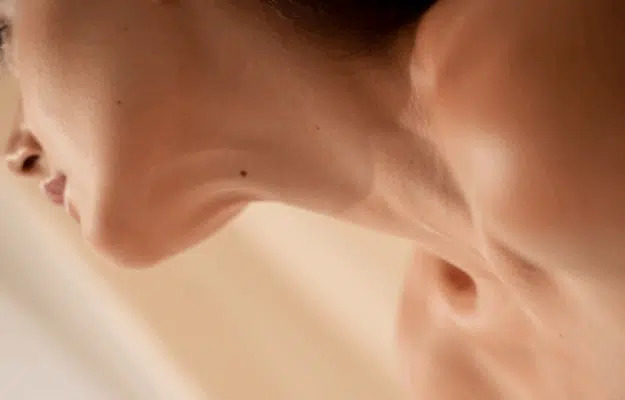What scarring can I expect following facelift surgery?
A rhytidectomy, or facelift, is an aesthetic surgical procedure that tightens facial features, providing a rejuvenated appearance. Ageing can cause issues like sagging jowls or drooping cheeks, but this operation can rectify facial sagging and alterations in facial structure. When pondering surgery, also think about facelift scarring and recuperation plans.
RELATED: Facelift Surgery FAQs – Q&A about Rhytidectomy
As with every operation, scars will result from a facelift. The surgeon creates incisions along your hairline, beginning at the temples, proceeding around the ears, and concluding at the lower scalp; this is the location of facelift scars. These scars can be concealed within your hairline and your face’s natural folds. A minor incision might be made beneath your chin to firm the neck region, resulting in neck lift scars.
RELATED: What are the signs of ageing in the face over time?
Facelift Procedure
A facelift is an aesthetic surgery aimed at providing a rejuvenated facial appearance. This technique reduces ageing indicators, such as loose facial skin, creases, and drooping cheeks.
RELATED: Different types of facelift and neck lift
During the operation, a skin fold on each face side is retracted while surgically modifying the underlying tissues. Excess skin is removed prior to suturing the flap closed, resulting in a more youthful facial contour.
However, this procedure won’t eliminate all wrinkles or sun damage. It’s crucial to recognise that, although outcomes are lasting, they won’t halt future ageing, and your skin may eventually sag once more.
What is an SMAS Facelift?
A conventional facelift tightens and lifts the skin but doesn’t address the facial muscles beneath it. A SMAS facelift is ideal for patients with significant sagging skin, yielding natural-looking outcomes. SMAS refers to the superficial muscular aponeurotic system, the muscle layer below facial skin.
Our specialist facelift surgeons at Centre for Surgery prefer this technique, often incorporating it into a comprehensive facial rejuvenation plan. This may include a neck lift, chin liposuction, and facial fat transfer for optimal results. Our surgeons often perform a neck lift simultaneously to address saggy neck skin, achieving a more natural appearance.
As you age, the SMAS layer begins to sag and descend on the face, causing:
- Drooping brows
- Pronounced nasolabial folds
- Marionette lines
- Jowls
- Lax skin
- Neck muscle bands
- Sagging neck or “turkey neck“
Types of Facelift Scars – What are Facelift Scars and how can they be minimised?
Each surgery is unique, and scars differ based on the technique employed. We’ll discuss different types of surgeries and their corresponding scars, sizes, and placements.
SMAS Facelift Scars
The SMAS facelift technique results in scars along your hairline and around your ears. The incisions for a SMAS facelift follow your hairline and proceed in front of and behind your ears, leaving S-shaped or S-lift scars. Sometimes, the surgeon may create an incision beneath your chin to tighten the deeper tissues of your face and neck. This approach is preferred at Centre for Surgery and is frequently combined with other procedures, such as a neck lift.
Deep Plane Facelift Scars
When comparing SMAS facelift vs deep plane facelift, the scar locations are the same, but the incisions in a deep plane technique penetrate deeper. By operating on deeper skin layers, this method reduces tension in the ears.
Short Scar Facelift Scars
Mini facelift scars are shorter than average and can be concealed within the crease in front of your ears. Also known as a short scar facelift or short incision facelift, this less invasive facial procedure yields natural results, and mini facelift recovery is typically faster than a traditional lift.
A mini facelift is most suitable for younger patients under 40 with minimal facial ageing signs. Often, injectables are a viable option for these patients until more pronounced jowls necessitate surgical intervention.
Facelift Recovery Time – Week by Week
Week 1: Immediate Post-Operative Period
Day 1-2:
- Pain and discomfort are managed with prescribed pain medication
- Swelling and bruising, which will peak around day 2 or 3
- Keep head elevated to reduce swelling
- Apply cold compresses to minimise bruising
- Drains may be in place to prevent fluid accumulation; your surgeon’ll remove them within 1-2 days
- Bandages around the face are removed during the first post-operative visit
- Limited facial movement and tight sensation
Day 3-7:
- The swelling starts to decrease
- Bruising may change colour but will begin to fade
- Continue keeping the head elevated and follow the surgeon’s instructions for cleaning incisions
- Gradually increase activity, avoiding strenuous exercise
- Possible numbness and tingling around the incisions
Week 2: Healing Continues
Day 8-14:
- Swelling and bruising continue to decrease
- Numbness around incisions may start to subside
- Sutures are removed around day 7-10, depending on your surgeon’s recommendation
- Light activities and short walks can be resumed
- Avoid heavy lifting, bending, and straining
- Camouflage makeup can be used to cover any remaining bruising
Week 3-4: Returning to Normal
Day 15-30:
- Most of the swelling and bruising should have subsided
- You can resume more activities, including moderate exercise
- Sensations of tightness and numbness may continue to improve
- Incisions should be healing well, and scar appearance will begin to improve
- Return to work, depending on your job and the extent of your surgery
Week 5-8: Continued Improvement
Day 31-60:
- Residual swelling should continue to decrease
- Scars will continue to fade and flatten
- Most normal activities, including strenuous exercise, can be resumed
- Final results begin to become more evident
Week 9-12: Final Results
Day 61-90:
- Any residual swelling should be gone, revealing the final results
- Scars will have faded significantly but may take up to a year to reach their final appearance
- Enjoy your rejuvenated, more youthful look
How Long Does it Take for Face Lift Scars to Fade?
Here is a general timeline for facelift scar healing:
1-3 months post-surgery:
- Scars may appear red, raised, and firm
- Some itching or discomfort may occur
3-6 months post-surgery:
- Scars begin to flatten and soften
- Redness starts to fade
6-12 months post-surgery:
- Scars continue to mature, becoming less noticeable
- The final scar appearance is usually achieved around the one-year mark
Remember that individual healing times may vary, and it’s crucial to follow your surgeon’s recommendations for postoperative care to achieve the best results. Some patients may benefit from silicone gel or sheeting, scar massage, or other scar management techniques to further improve the appearance of their facelift scars.
12 Facelift Recovery Tips
-
Follow Your Surgeon’s Instructions
- Adhere to all post-operative care guidelines provided by your surgeon
- Take medications as prescribed and attend all follow-up appointments
-
Rest and Sleep
- Ensure you get plenty of rest and sleep during the initial recovery period
- Sleeping with your head elevated helps reduce swelling and promotes healing
-
Manage Swelling and Bruising
- Apply cold compresses to minimise bruising and swelling, as your surgeon has recommended.
- Avoid activities that may increase blood flow to the face, such as bending or heavy lifting.
-
Maintain a Balanced Diet
- Eat a healthy, well-balanced diet rich in vitamins and minerals to support the healing process.
- Stay hydrated by drinking plenty of water
-
Avoid Alcohol and Smoking
- Refrain from consuming alcohol, as it can interfere with the healing process.
- Stop smoking for several weeks before and after surgery, as nicotine can hinder blood flow and delay healing.
-
Gentle Exercise
- Begin with light walking as soon as you feel comfortable, gradually increasing activity levels.
- Avoid strenuous exercise until your surgeon clears you to resume such activities.
-
Keep Incisions Clean
- Follow your surgeon’s instructions for cleaning and caring for your incisions.
- Avoid applying makeup, creams, or lotions to the incision area until it has healed completely.
-
Manage Pain and Discomfort
- Take prescribed pain medication as directed by your surgeon
- Notify your surgeon if pain worsens or doesn’t improve with medication
-
Be Patient with Recovery
- Understand that the healing process takes time and varies for each individual.
- Keep realistic expectations and be patient as you progress through the recovery period.
-
Avoid Sun Exposure
- Wear a wide-brimmed hat and apply sunscreen with an SPF of 30 or higher to protect your healing skin and scars from sun exposure.
- Excessive sun exposure can cause scars to darken and delay healing
-
Scar Management
- Follow your surgeon’s recommendations for scar management techniques, such as silicone gel or sheeting, scar massage, or topical treatments.
- Remember that scars may take up to a year to reach their final appearance
-
Stay in Touch with Your Surgeon
- Communicate any concerns or questions with your surgeon throughout the recovery process.
- Your surgeon is your best resource for addressing any issues that may arise during healing.
How Long Do Facelift Results Last?
Maintain a healthy lifestyle, protect your skin from sun damage, and follow a good skin care regimen to prolong the effects of the facelift and age gracefully.
Determining the Ideal Facial Rejuvenation Option for You
Combining a facelift with other procedures, such as facial fat transfer, brow lift, rhinoplasty, or neck lift, can help achieve the desired outcome. At Centre for Surgery, our top-notch London plastic surgeons often recommend a mix of surgeries for our UK clients to ensure a harmonious and natural appearance.
Are you prepared to schedule a consultation after exploring the various facelift techniques, scars, and recovery timelines? During this appointment, an expert facelift surgeon can address any concerns and help you determine the most suitable option for your needs. Remember to consult with an expert surgeon before making any treatment decisions.












